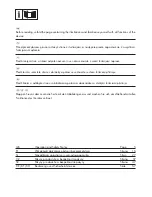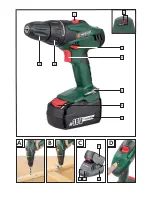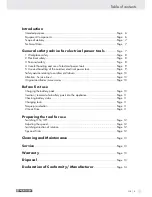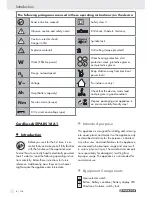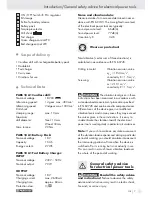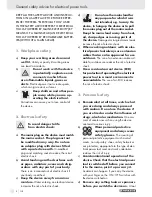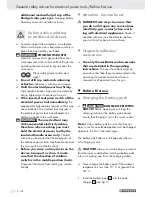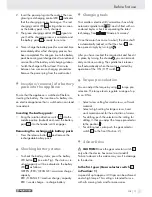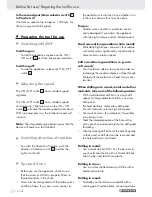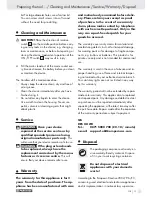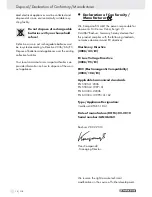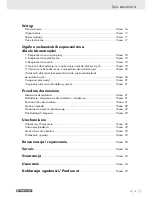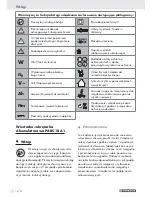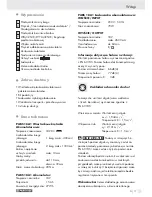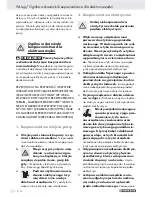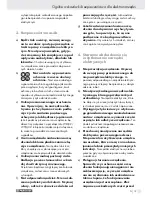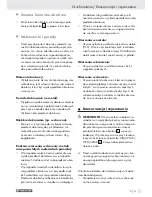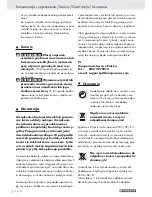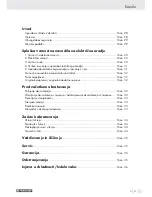
12 GB
Before first use / Preparing the tool for use
In the second gear (Gear selector switch
1
in Position: 2)
It achieves a speed of up to approx. 1300 rpm, for
the carrying out of drilling tasks.
Preparing the tool for use
Switching ON /OFF
Switching on:
To start the appliance squeeze on the ON /
OFF switch
4
and then keep it pressed down.
Switching off:
To stop the appliance, release the ON / OFF
switch
4
.
Adjusting the speed
The ON / OFF switch
4
has a variable speed
regulator.
The ON / OFF switch
4
has a variable speed
control device. Slight pressure on the ON / OFF
switch
4
will cause the rotation speed to slow down.
With increased pressure, the rotational speed will
increase.
Note:
The integrated engine brake means that the
device will come to a fast standstill.
Switching direction of rotation
To switch the direction of rotation, push the
direction of rotation switch
3
to either the
right or to the left.
Tips and Tricks
Before you use the appliance, check to see
that the screw or drill bit is properly fitted, i.e.
located centrally in the chuck.
Screw bits are designated with their dimensions
and their shape. If you are unsure, always try
the particular screw bit out to see whether it sits
in the screw head without any free play.
Torque:
Smaller screws and bits in particular can be
easily damaged if you adjust the appliance
with too high a torque and/or rotation speed.
Hard screwdriving conditions (into metal):
Particularly high torques can occur, for example
with metal screws tightened by socket tool bits.
Select a lower rotation speed.
Soft screwdriving conditions (e.g. into
soft wood):
You should also select a low speed in order not
to damage the wood workpiece surface through
contact with the metal screw head. Use a coun-
tersinker.
When drilling into wood, metal and other
materials, take note of the following advice:
With small diameter drill bits use a high drill
speed. For large diameter drill bits, use a low
drill speed.
For hard materials, select a low drill speed.
For soft materials, select a high drill speed.
Secure or fix down the workpiece (if possible)
in a clamp or vice.
Mark the intended position of the hole with a
centre punch or a nail and select a low drill speed
for drilling.
Take the rotating drill bit out of the hole frequently
so that swarf or drill dust can be re-moved and
the hole and tool is ventilated.
Drilling in metal:
Use a metal drill bit (HSS). For the best results,
you should cool the bit with oil. Metal drill bits
can also be used to drill into plastic.
Drilling in stone:
Use a circular shafted masonry drill bit with a
hardened metal tip.
Drilling in wood:
Normally you should use a wood drill with a
centring point. For deep holes, use an auger type
Summary of Contents for PABS 18 A1 - ANNEXE 1
Page 3: ...A B C D 5 7 10 7 12 11 6 1 2 3 4 9 8...
Page 25: ...26...


